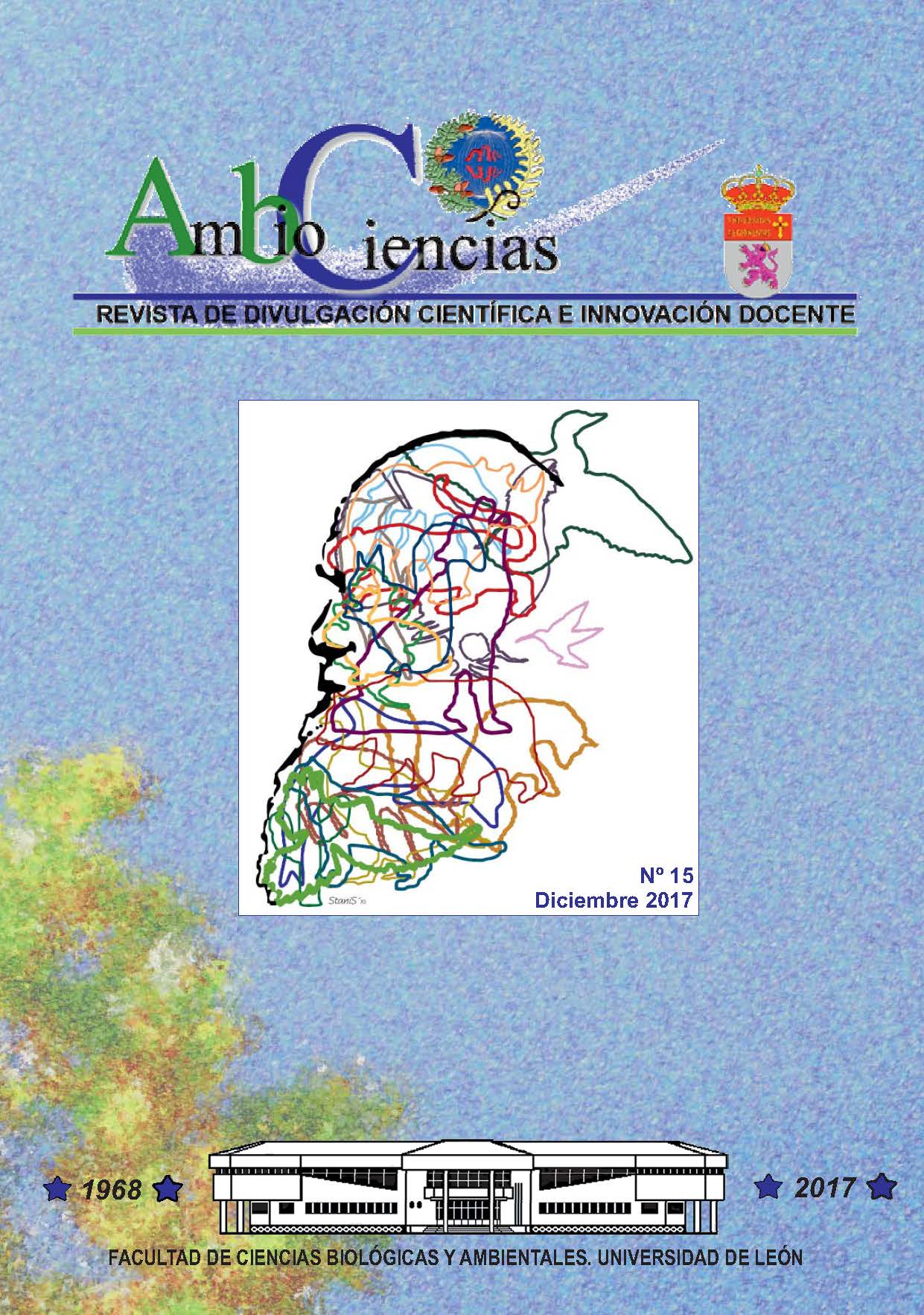Bases moleculares de la floración
DOI:
https://doi.org/10.18002/ambioc.v0i0.5557Abstract
La floración es uno de los procesos clave en el ciclo vital de una planta que inaugura su fase adulta o reproductiva. El estudio de los mecanismos reguladores de la floración ha sido crucial para entender este proceso y poder desarrollar aplicaciones biotecnológicas con beneficios para la agricultura. Este estudio se ha centrado en las especies Arabidopsis thaliana y Anthirrinum majus, modelos para flores con simetría de tipo radial y bilateral respectivamente. Los genes de identidad del meristemo integran señales endógenas y exógenas que regulan el proceso de floración para que tengan lugar en las condiciones ambientales más favorables. Una vez integradas por parte de la planta, desencadenan la evocación floral y regulan la actividad de los genes homeóticos de identidad floral que controlar la formación de los órganos florales. En conclusión, los procesos que regulan la floración a nivel molecular son múltiples y complejos. En base a estos conocimientos se abre la posibilidad de modificar el comportamiento de la floración de especies cultivables, lo que podría tener aplicaciones en agricultura.Downloads
Riferimenti bibliografici
Abelenda, J.A., Navarro, C. y Prat, S. (2014) Flowering and tuberization: a tale of two nightshades. Trends in Plant Science 19:115-122.
Almeida, J., Rocheta, M. y Galego, L. (1997) Genetic control of flower shape in Antirrhinum majus. Development 124:1387-1392.
Blázquez, M.A., Green, R., Nilsson O., Sussman, M.R. y Weigel, D. (1998) Gibberellins promote flowering of Arabidopsis by activating the LEAFY promoter. The Plant Cell 10:791-800.
Blázquez, M.A., Piñeiro, M. y Valverde, F. (2011) Bases moleculares de la floración. Investigacióny ciencia 416:28-36.
Blázquez, M.A. y Weigel, D. (2000) Integration of floral inductive signals in Arabidopsis.Nature 404:889-892.
Bowman, J.L., Smyth, D.R. y Meyerowitz, E.M. (1991)Genetic interactions among floral homeotic genes ofArabidopsis.Development 112:1-20.
Causier, B., Castillo, R., Zhou, J., Ingram, R., Xue, Y., Scharz-Sommer, Z. y Davies, B. (2005) Evolution in action: following function in duplicated floral homeotic genes.CurrentBiology 15:1508-1512.
Chaïlakhyan, M.K. (1985) Hormonal regulation of reproductive development in higher plants. Biologia Plantarum27:292-302.
Coen, E.S. y Meyerowitz, E.M. (1991) The war of the whorls: genetic interactions controlling flowering development.Nature 353:31-37.
Corbesier, L., Vincent, C., Jang, S., Fornara, F., Fan, Q., Searle, I., Giakountis, A., Farrona, S., Gissot, L., Turnbull, C. y Coupland,G. (2007) FT proteinmovement contributes to long-distance signaling infloral inductionofArabidopsis. Science 316:1030-1033.
Corley, S.B., Carpenter, R., Copsey, L. y Coen, E. (2005) Floral asymmetry involves an interplay between TCP and MYB transcription factors in Antirrhinum. Proceedings of theNaturalAcademy of ScienceUSA102:5068-5073.
Davies, B., Cartolano, M. y Scharz-Sommer, Z (2006) Flower development: the Antirrhinumperspective.Advances ofBotanicalResearch 44:279-321.
Endress, P.K. (1999) Symmetry in flowers: diversity and evolution. International Journal ofPlant Science 160:3-23.
Galego, L. y Almeida, J. (2002) Role of DIVARICATA in the control of dorsoventral asymmetry inAntirrhinumflowers.Genes andDevelopment 16:880-891.
Hileman, L.C. (2014) Trends in flower symmetry evolution revealed through phylogenetic and developmental genetic advances. Philosophical Transactions of theRoyal Society 369:2013.0348.
Hudson, A., Critchley J. y Erasmus, Y. (2008) The genus Antirrhinum(Snapdragon): a flowering plant model for evolution and development. Cold Spring Harbour Protocols 3:1-7.
Luo, D., Carpenter, R., Vincent, C., Copsey, L. y Coen, E. (1996) Origin of floral asymmetry inAntirrhinum.Nature 383:794-799.
Meyerowitz, E. M. (2002) Plants compared to animals: the broadest comparative study of development. Science 295:1482-1485.
Riechmann, J.L. y Meyerowitz, E.M. (1997) MADS domain proteins in plant development.BiologicalChemistry 378:1079-1101.
Samach, A., Onouchi, H., Gold, S.E., Ditta, G.S., Schwarz-Sommer, Z., Yanofsky, M.F. y Coupland, G. (2000) Distinct roles of CONSTANS target genes in reproductive development of Arabidopsis. Science 288:1613-1616.
Simon, R., Igeño, M.I. y Coupland, G. (1996) Activation of floral meristemidentity genes In Arabidopsis. Nature 384:59-62.
Song, Y.H., Shim, J.S., Kinmonth-Schultz, H.A. y Imaizumi, T. (2015) Photoperiodic flowering: time measurement mechanisms in leaves. Annual Review of Plant Biology 66:441-464.
Taiz, L., Zeiger, E., Møller, I.M. y Murphy, A. (2015) Plant Physiology and Development, 6ª edn. Sinauer Associates, Sunderland (Massachusetts).
Theiβen, G. (2001) Development of floral organ identity: stories from MADS house. Current Opinion in Plant Biology 4:75-85.
Theiβen, G. y Saedler,H. (2001)Floral quartets .Nature 409:469-471.
Valverde, F., Mouradov, A., Soppe, W., Ravenscroft, D., Samach, A. y Coupland, G. (2004) Photoreceptor regulation of CONSTANS protein in photoperiodic flowering. Science 303:1003-1006.
Weigel, D. yMeyerowitz, E.M. (1994) The ABCs of floral homeotic genes. Cell, 78:203- 209
Downloads
Pubblicato
Come citare
Fascicolo
Sezione
Licenza
Copyright (c) 2018 Paula Mendoza González, Antonio E. Encina García

Questo lavoro è fornito con la licenza Creative Commons Attribuzione - Non commerciale - Condividi allo stesso modo 4.0 Internazionale.
Los autores que publican en esta revista están de acuerdo con los siguientes términos:
- Los autores ceden de forma no exclusiva los derechos de explotación (reproducción, distribución, comunicación pública, transformación) a la Universidad de León, por lo que pueden establecer, por separado, acuerdos adicionales para la distribución no exclusiva de la versión de la obra publicada en la revista (por ejemplo, alojarlo en un repositorio institucional o publicarlo en un libro), con un reconocimiento de su publicación inicial en esta revista.
- Este trabajo se encuentra bajo la Creative Commons Attribution-NonCommercial-ShareAlike 4.0 International License. Puede consultarse desde aquí la versión informativa y el texto legal de la licencia.
- Se permite y se anima a los autores a difundir electrónicamente las versiones pre-print (versión antes de ser evaluada) y/o post-print (versión evaluada y aceptada para su publicación) de sus obras antes de su publicación, ya que favorece su circulación y difusión más temprana y con ello un posible aumento en su citación y alcance entre la comunidad académica.







